Once divided by the Wall, Berlin has changed remarkably over the years.
To celebrate the 30th anniversary of the Wall falling, contact lens company Lenstore compared historical photographs of iconic Berlin landmarks with pictures from today by overlaying the images from past and present.
Berlin Wall, 1989 vs today
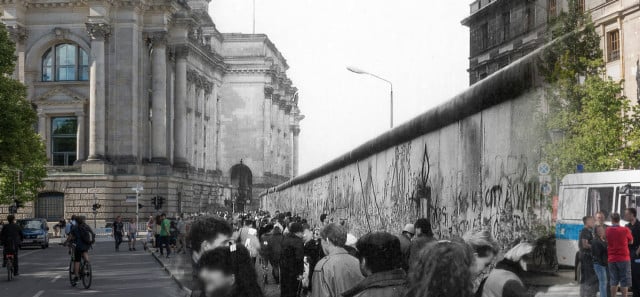 Photo: Lenstore/David Köster
Photo: Lenstore/David Köster
The Berlin Wall was built by East Germany as a barrier to close off East Germany's access to West Berlin and hence West Germany.
In the years between 1949 and 1961, about 2.5 million East Germans fled from East to West Germany, including steadily rising numbers of skilled workers, professionals, and intellectuals. At that time, the country was facing an economic and social crisis, which lead the East German government to the decision to close the entire border, and the wall was erected overnight, on 13 August 1961.
Although the numbers have never been confirmed, it is said that at least 138 people lost their lives trying to escape across the wall, whereas an estimated 5,000 did manage to flee.
Under raising political pressure, on the evening of the 9th November 1989, a government representative announced that East Germans would be free to travel into West Germany starting immediately and the border was opened.
The above photo shows what the Wall looked in the city and the below photo was taken in 2018.
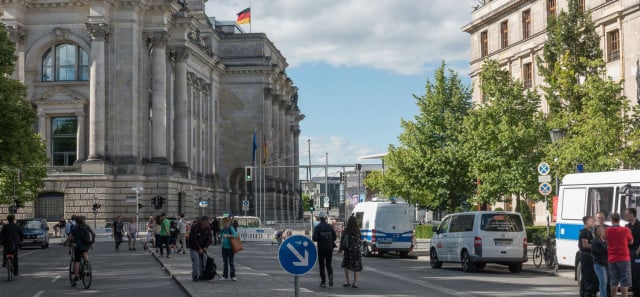 Photo: Lenstore/David Köster
Photo: Lenstore/David Köster
The Brandenburg Gate, 1928 vs today
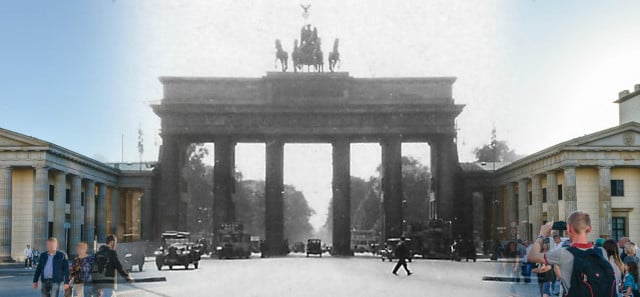 Photo: Lenstore/David Köster
Photo: Lenstore/David Köster
As soon as Western media reported about the opening of the borders, people started gathering in large numbers at checkpoints on both sides. Passport checks were dropped by guards at around 11.30pm due to the overwhelming amount of people, by which time people were surging through the open gates.
It wasn’t until 11th and 12th November that the first pieces of wall were pulled down. A hole was made in the wall segment cutting off the Brandenburg Gate on 10th November, but then sealed off again by the East German authorities, and the wall did not come down properly until 22nd December 1989. The picture below shows the gate today.
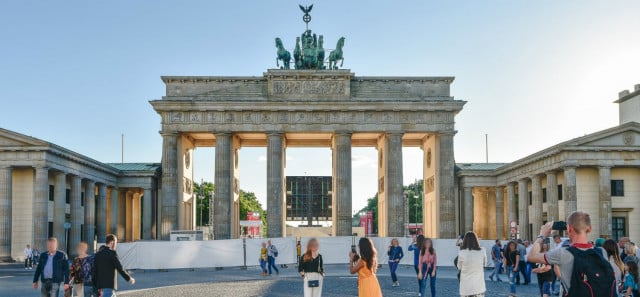 Photo: Lenstore/David Köster
Photo: Lenstore/David Köster
Reichstag, 1929 vs today
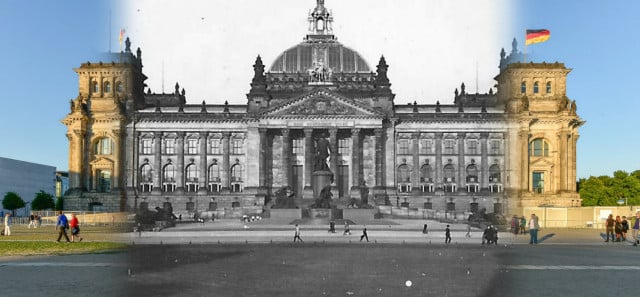 Photo: Lenstore/David Köster
Photo: Lenstore/David Köster
Until 1989, the Berlin Wall ran close to the east side of the building. The Reichstag was severely damaged during a fire in 1933, but reconstructions only really started after the reunification of West and East Germany in 1990.
Next to it, at the corner between Ebertstraße and Scheidemannstraße, a row of white crosses can be found as a reminder of the so called “Mauertoten”, the people who lost their lives trying to escape East Germany. To this day, people light candles and bring fresh flowers to this site. The Reichstag today is pictured below.
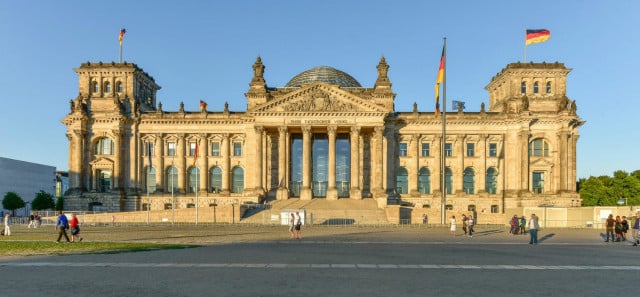 Photo: Lenstore/David Köster
Photo: Lenstore/David Köster
Berliner Cathedral, 1928 vs today
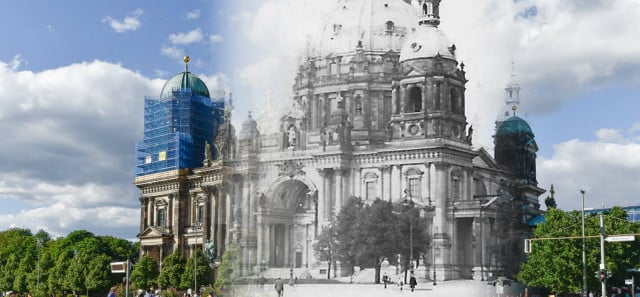 Photo: Lenstore/David Köster
Photo: Lenstore/David Köster
The erection of the Berlin Wall and consequent split of the city between West and East placed a heavy burden on the religious community of the Berlin Cathedral. While the West Berliners built a community centre in Müllerstrasse, near the cathedral cemetery, in the eastern part, the congregation continued its work in the destroyed cathedral that had been severely damaged in 1944.
It took time for the two congregations to grow together after 1989, as a lot of understanding was required on both sides in order to go grow back together and find a common path again. The cathedral is shown in the present day in the photo below.
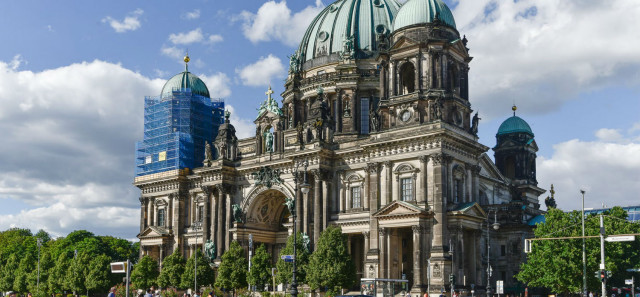 Photo: Lenstore/David Köster
Photo: Lenstore/David Köster

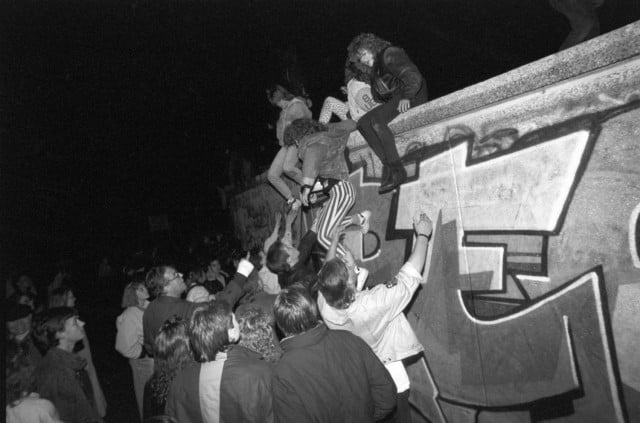

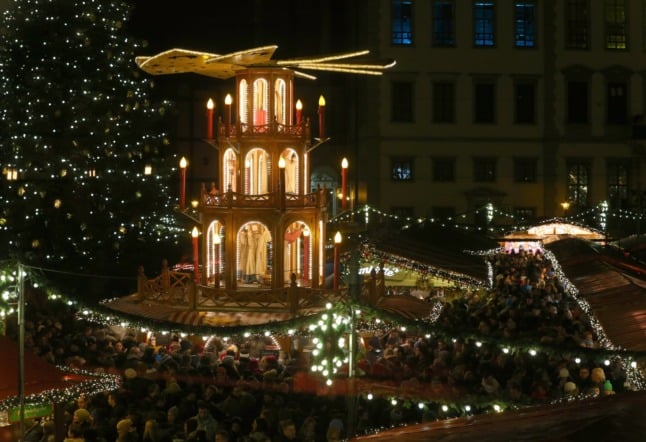
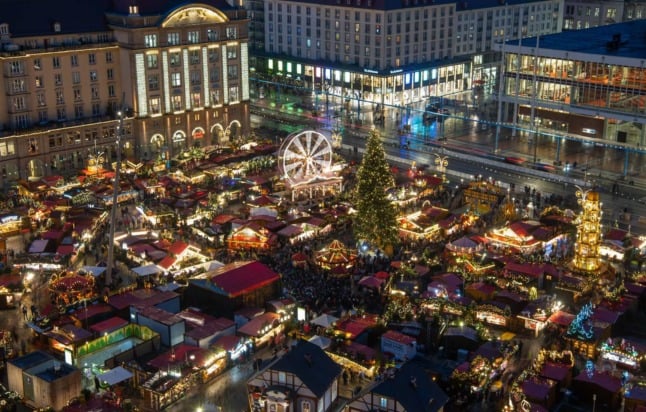
 Please whitelist us to continue reading.
Please whitelist us to continue reading.
Member comments